|
|
Page 26p |
|
Our Big Trip Across the Western US - September 2015
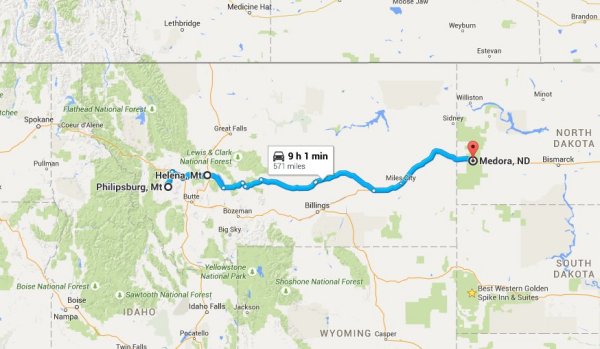
The first day of our trip heading home began before 6:00 AM to another very cool morning at 40 degrees. We left Philipsburg on Montana 1 headed north east to pick up I-90 at Anaconda. Gary had mentioned some road work but it was limited to a new blacktop surface to the streets in town so we didn’t lose any time there. The trip across Montana seemed long as we had decided to take I-94 through North Dakota and that meant traveling north on it. We had never taken this route and found the terrain a bit boring. It flattened out into a high dry plain with very few features to spark any interest. As we got near North Dakota we did start to see some changes that were the start of the North Dakota Badlands. This picture was taken at a rest stop between Custer Montana and Pompey’s Pillar. 
We crossed into to North Dakota and noticed a bit more farming along the route. Huge fields of corn and what must have been oats or wheat stretched as far as we could see on either side of the Interstate. As we entered Medora, ND we crossed a bridge over the Little Missouri River, this picture looks to the north with the Theodore Roosevelt National Park as a backdrop. This river runs through the park but we found out later that getting a picture of it in the park is nearly impossible without a long hike through the tall grasses. 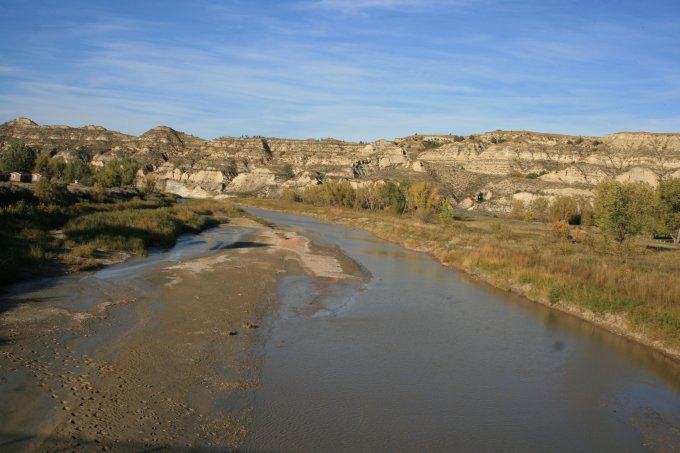
Just before getting to the park entrance is a park featuring the ruins of the De Mores Packing plant. It was built in 1883 to supply dressed beef right off the range and was originated by Marquis De Mores. The town of Medora is named after his wife. The plant burned in 1907 and was donated to the state by the son of De Mores. 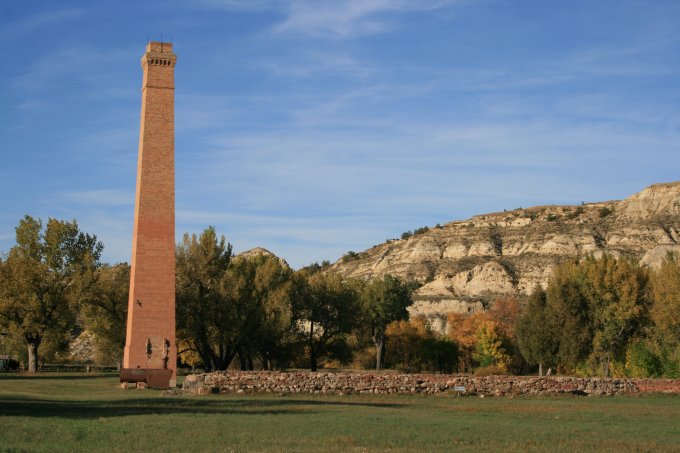
We decided to drive through the Roosevelt park before going into Medora as it was getting late in the afternoon. Our literature told us that it was a 36 mile scenic route and we wanted to make it all around. The guard gate was unattended with instructions to stop at the visitor center to check in. Since it is past Labor Day they have shortened hours and had they mentioned it we should have visited the log cabin behind the visitor center first. The park is open 24/7 but the cabin is only open while the visitor center is open. The first turn-out on the drive overlook Medora to the south east and the fall colors were striking. 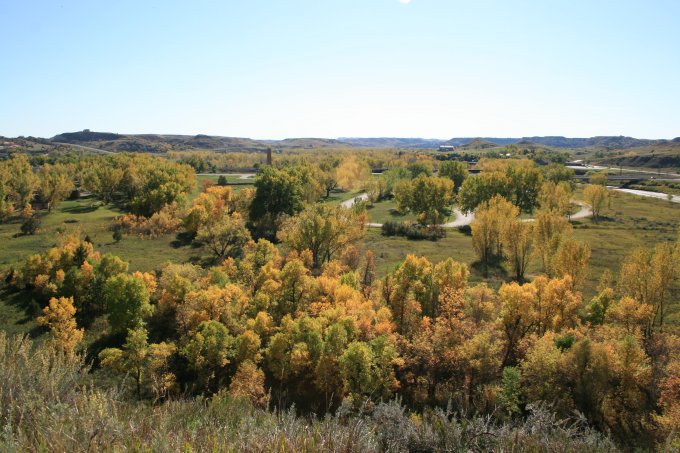
We saw a lot of wildlife and it seemed that around every curve there was another prairie dog town. We are not that interested in burrowing rodents as we have our share of woodchucks. But we did stop a couple times to watch as they scurried around their towns of burrows. 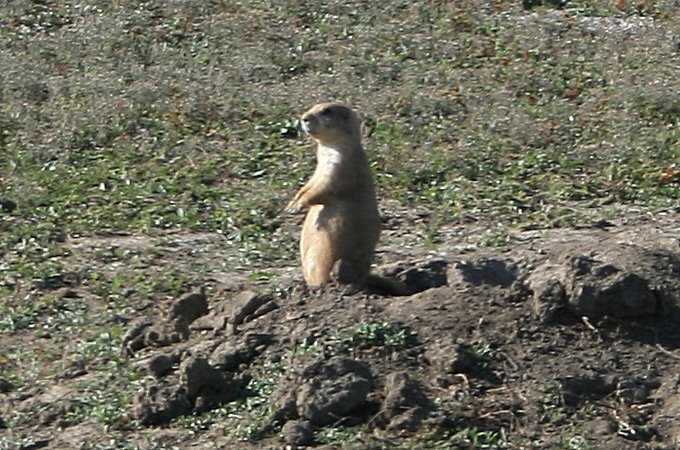
We were, on the other hand, very pleased to see quite a number of Bluebirds flitting around the area. Based on our research this is a Mountain Bluebird (he has no red on his breast) and they generally only habituate the far western edge of this state. We also saw a couple Robins and a Magpie. We have been trying to photograph the Magpie since we first saw them in Northern California and all the way to Gary’s place, but they just won’t sit still. 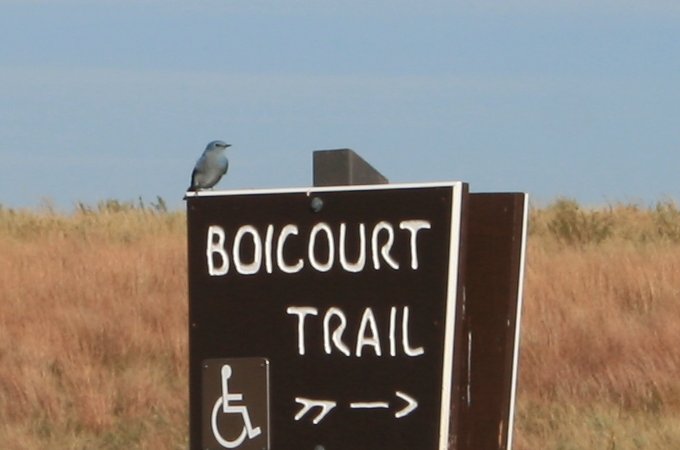
We also saw a large number of bison around the park. The first time they were on the road and we were very cautious as they are so large the HHR would definitely lose the battle if they chose to tangle with us. This group was lounging about near one of the Badlands type hills in the nearly 90-degree heat and didn’t seem to care a thing about us. 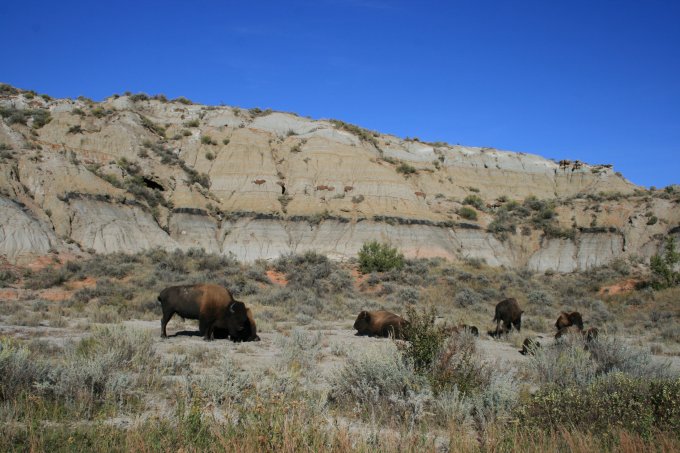
Although the Badlands formations are interesting and varied in color and shape, we kept moving through the park so we wouldn’t lose the light for pictures. After a while they all stated to look alike. We did think that the park would look completely different right after a rain, but none was in sight. 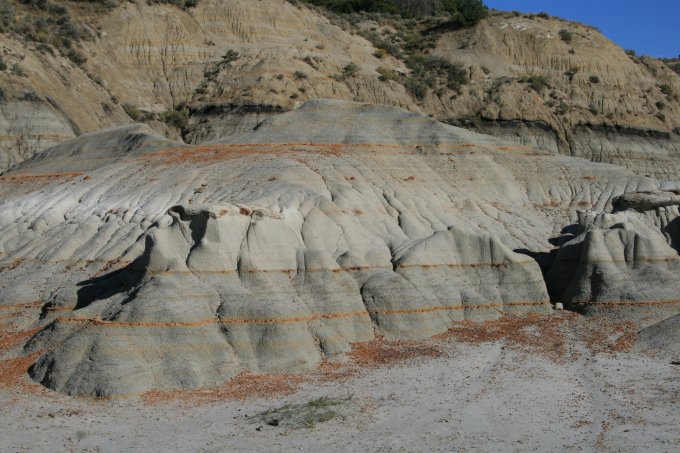
We were nearly done with our drive before running into a view with the red rocks in the formations. This picture was taken from Scoria overlook. 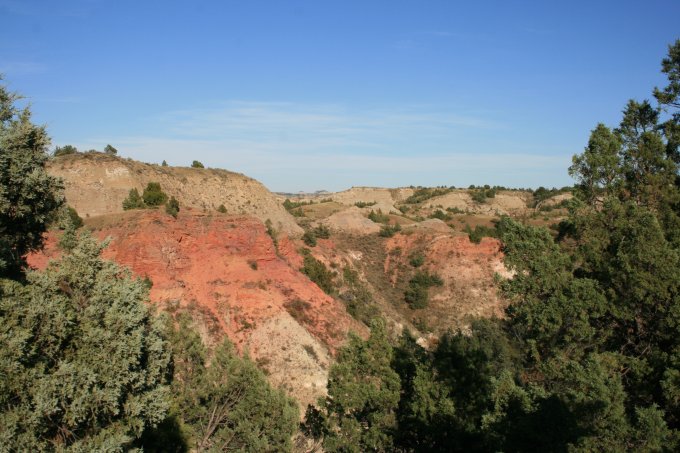
Our final stop was back at the visitor center that had closed and found the Maltese Cross Cabin, which was originally located 7 miles south of Medora. Roosevelt purchased an interest in the Chimney Butte Ranch and had the managers build the cabin as temporary quarters. He returned in 1884 and established a second ranch but by 1887 he began selling his interests in cattle ranches. Others took over the cabin by 1900. It is interesting to note that during his presidency the cabin was acquired for the World’s Fair in St. Louis and then was moved to Oregon. Later it spent time in Fargo and then Bismarck. The DAR acquired it in 1959 and it came to this park as its permanent home. 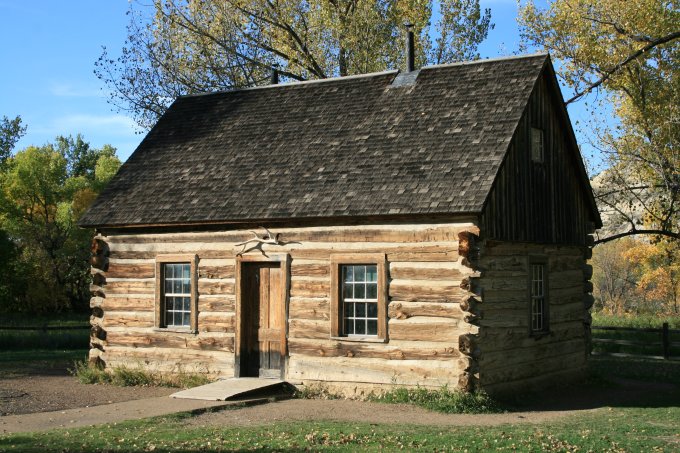
If you do not see a menu on the left click here to go to our home page. |